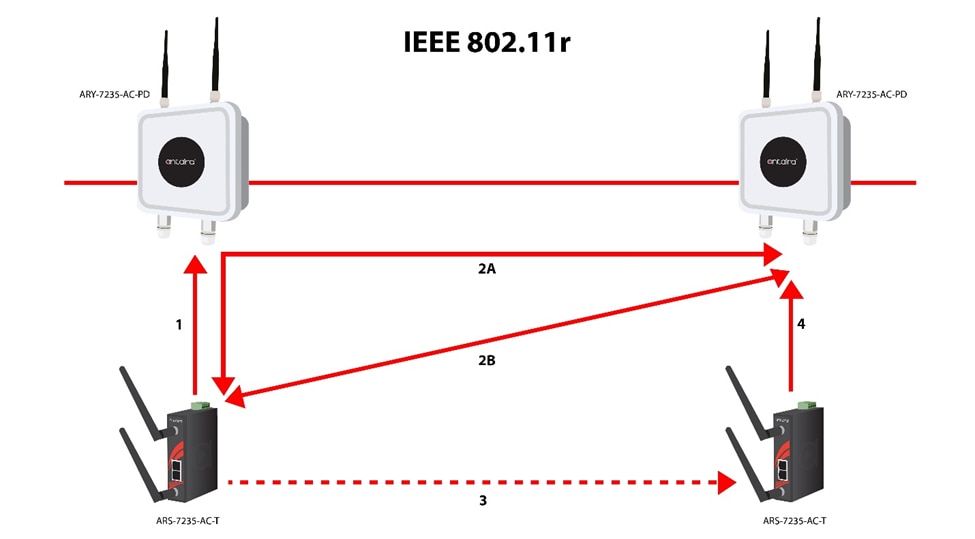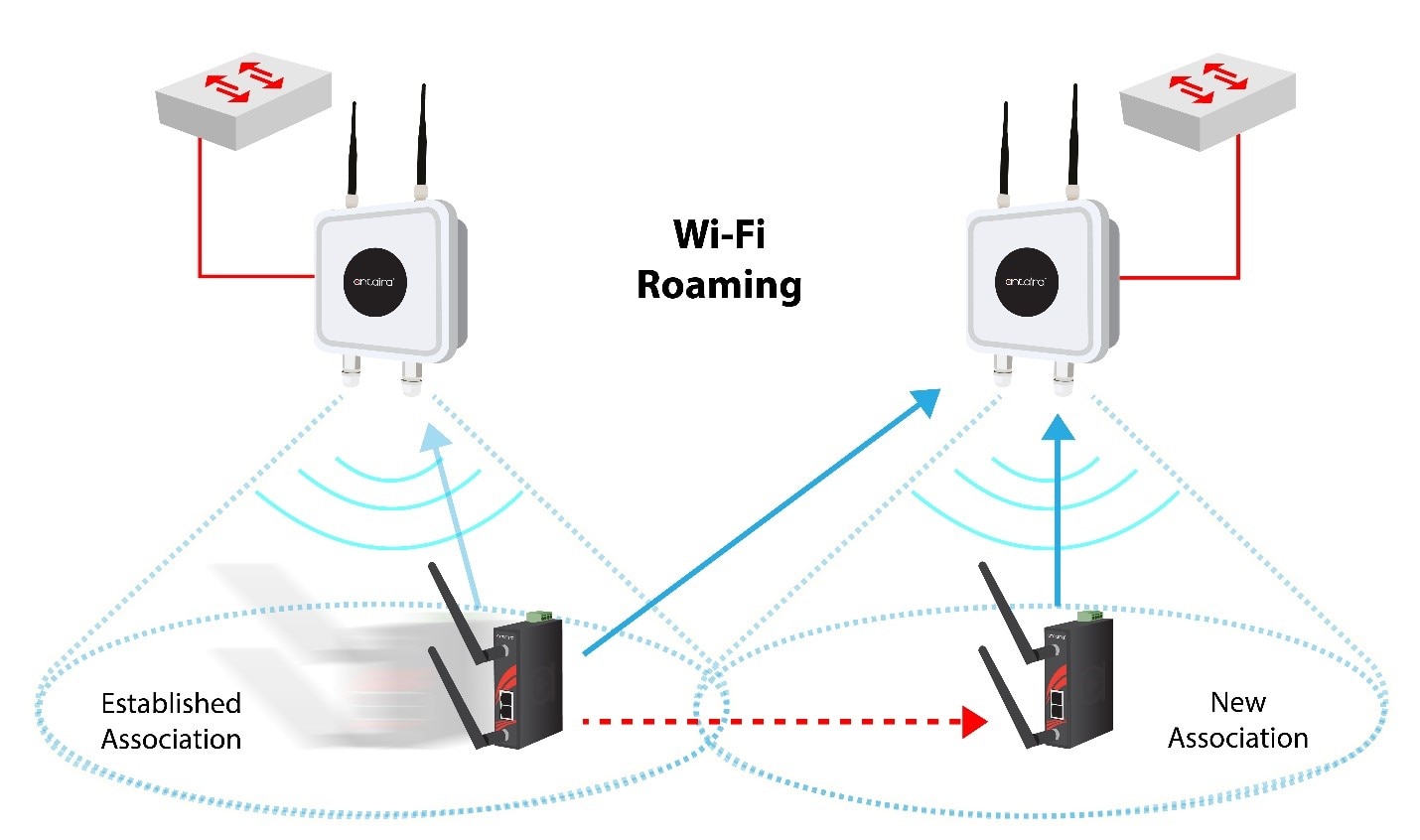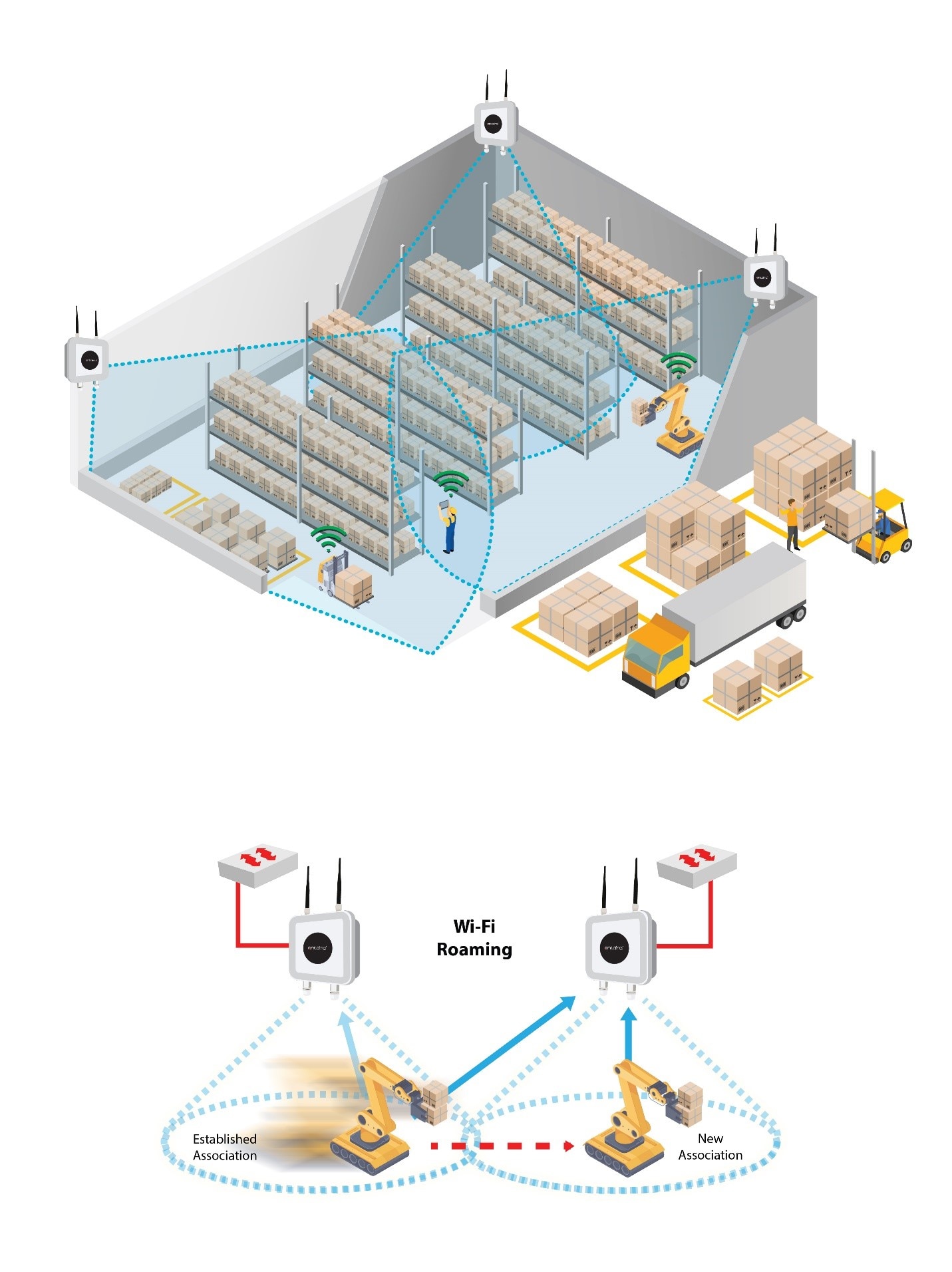In the ever-evolving landscape of wireless communication, the importance of seamless and efficient data transfer has become critical, especially in environments where mobility and constant connectivity are crucial. With the advent of technologies like WiFi and the introduction of standards such as IEEE 802.11r, the way we approach wireless communication has undergone significant changes. These advancements are not just about staying connected; they are about ensuring uninterrupted service and data integrity in dynamic scenarios, from moving vehicles to autonomous robots in warehouses. This article delves into the world of wireless Ethernet communication, exploring how innovations like Antaira's Rapid Roaming and the 802.11r protocol are revolutionizing the way devices stay connected on the move, offering solutions for older networks and showcasing practical applications in modern settings.
Wireless Ethernet (WiFi) communication is a key technology for transmitting vital data from sensors. Its advantage lies in eliminating the need for physical cables, thereby enabling unrestricted three-dimensional movement. The standard 802.11ac WiFi can cover distances up to 100 meters. However, larger areas often require this range to be extended, which is achieved by installing multiple industrial access points (APs). In scenarios where industrial wireless devices, such as vehicles or robots, are on the move, they need to seamlessly switch to the nearest strong signal AP. The ideal solution for this is the implementation of 802.11r protocol in the network infrastructure, which facilitates rapid transition between APs in less than 50 milliseconds.
However, in cases where the existing WiFi setup doesn't support 802.11r and yet demands quick switching times, Antaira's Rapid Roaming offers an effective alternative. This technology enhances the WiFi client's ability to continuously scan the environment and prepare for connection with new APs before the usual signal degradation and disconnection occur, which typically results in communication lapses lasting a minute or more. With Antaira’s Rapid Roaming, the switch to a new AP is proactively initiated while the connection is still robust, ensuring efficient data throughput and a swift transition time under 150 milliseconds.

IEEE 802.11r Wireless Roaming
Roaming capability has been a sought-after feature in wireless devices for many years. The IEEE 802.11r standard, introduced in 2002 and further developed with key updates in 2008 (IEEE 802.11r-2008), aimed to address this need. The primary objective of the 802.11r standard is to enable smooth and rapid handover of wireless connections between multiple access points (APs) as a client moves along its path, minimizing any significant delays. This is especially crucial for Voice over Internet Protocol (VoIP) applications, where maintaining a transmission time of 50 milliseconds or less is vital to prevent noticeable interruptions in human conversation. The 802.11r standard facilitates fast, secure, and seamless transitions between APs by preconfiguring authentication and Quality of Service (QoS) settings in advance. This approach ensures stable data throughput without the delays typically associated with standard authentication processes.

Steps of Fast Roaming
1) Authentication and QoS
a. In this step, two technologies are properly transitioning. Units are not just connected to one AP, but it has the same privileges in respect to communication priority. It is important in voice-over IP scenarios when delays could affect the human-to-human conversation.
2) Exchange 802.11r (2a - cable, 2b - radio)
a. This special protocol allows to exchange all necessary information ahead of the travel path of a client. This makes the transition smooth and fast.
3) Travel path
a. This is the way the Client travels along the available APs.
RAPID ROAMING in Legacy Non-802.11r Access Point Compatible Environments
Antaira's ARS-7235-AC-T offers client-based Rapid Roaming, which is particularly beneficial in older network installations that do not support the 802.11r standard. While not as efficient as 802.11r, this technology aims to bridge the gap in systems lacking advanced roaming capabilities. Traditional methods involve disconnecting from one access point (AP) and reconnecting to another, a process that can sometimes take more than a minute. This can be particularly problematic in situations where slow-moving clients remain connected to a weak AP signal, despite the availability of another AP with a stronger signal nearby. To overcome these challenges, Antaira has developed a special Rapid Roaming protocol, tailored to improve the roaming experience in such environments.

Below are some of the requirements for the infrastructure for Rapid Roaming
1) Same Service Identifier (SSID)
2) Same Password
3) Same Security Mode
4) Sand Band
5) Same Channel Width
For rapid roaming technology to function effectively, it's essential to use access points (APs) with the same SSID and security key. When Rapid Roaming is activated, the client device scans for nearby APs. It's important to set the scanning intervals appropriately: slower scans when the Received Signal Strength Indication (RSSI) levels are high, allowing the device to focus on maximum data throughput. As the RSSI level drops to a predetermined threshold, indicating the need for a new connection, the device switches to faster scans to locate and authenticate with a new AP, simultaneously disconnecting from the current one. This proactive approach prevents weak signal issues and prepares for a new connection in advance. There are two scanning modes: "standard," which scans all channels, and "intelligent," which learns and automatically searches for familiar AP channels, speeding up reconnection in environments like warehouses where devices move back and forth among the same APs.
Implementing the 802.11r standard requires wireless infrastructure that supports it, often entailing a significant investment, including a Wireless LAN Controller to manage the APs. In scenarios where the necessary infrastructure is absent or cost prohibitive, Antaira's Rapid Roaming technology offers many similar benefits at a lower cost.
A practical example of this technology in action is in a warehouse with autonomous robots that stock shelves and fulfill orders. In this setting, a legacy WiFi network would be in place for employee devices but there is a lack of equipment supporting 802.11r. Antaira would then be able to provide an affordable solution by equipping each robot with an ARS-7235-AC wireless dual band router, enabling Rapid Roaming technology without the need for an expensive network overhaul.
